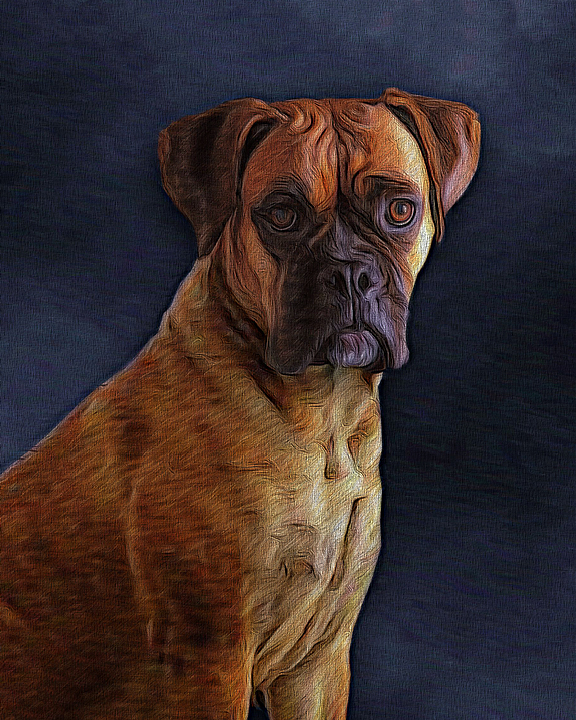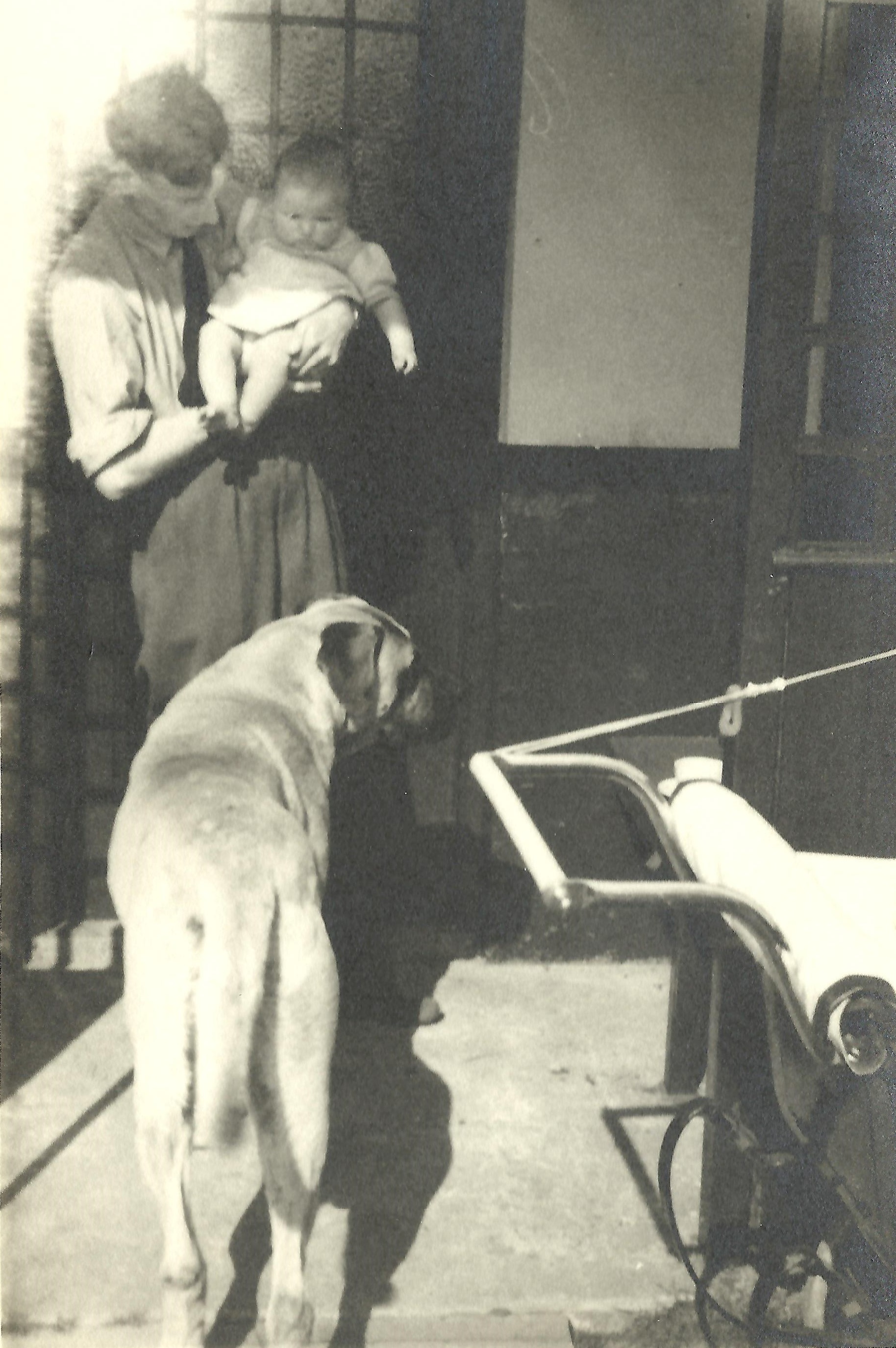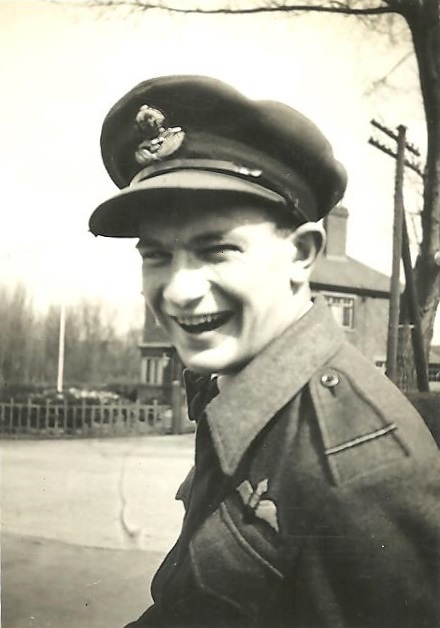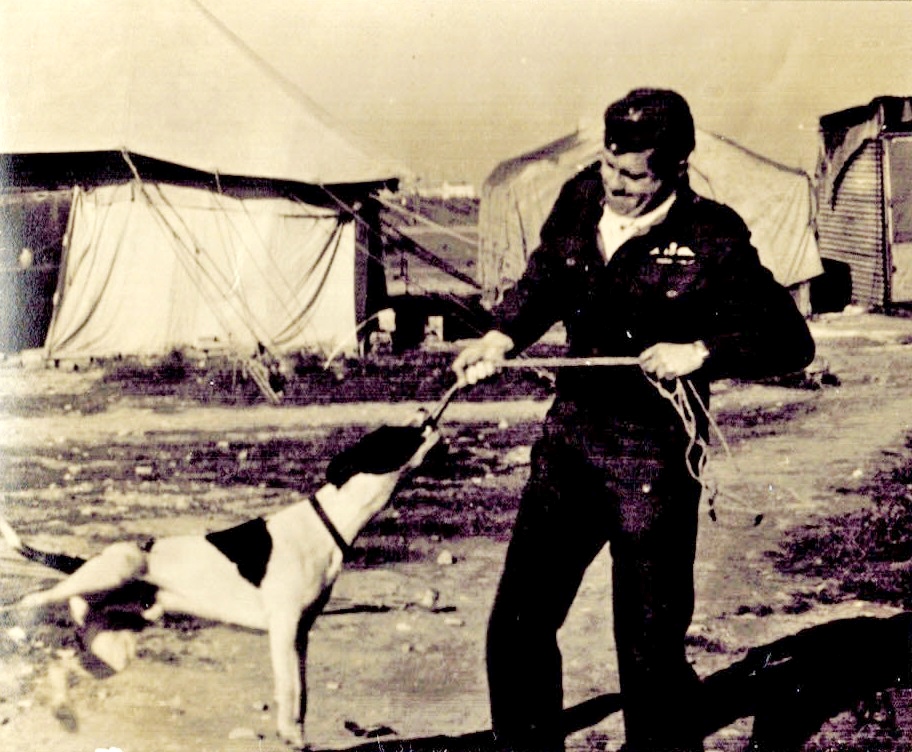Bruce was born in the second half of the 1930s, in puppyhood the family pet of Harold and Catherine Hodgson of Darbyn’s Brook near Shamley Green, Surrey. Their son Robert (born 1927) recalls Bruce as one of five dogs in the household, the others being two cocker spaniels, a terrier and a miniature dachshund. If there were ever any pedigree papers, they did not survive a fire that destroyed much of the Hodgson family archive in 2006.
[1]
Wartime food rationing made no provision for dogs. Thus a norm developed of re-homing dogs with institutions where kitchen scraps might be generated. It seems that Bruce first passed to Miss Valerie Y Champneys (Catherine Hodgson’s sister) who was at the time Bursar of the Elmhurst Ballet School, then located in Camberley. Robert Hodgson went too, boarding in his early teens at a school where all bar three of the pupils were girls. (At this point in the narrative, your scribe is oozing jealosy! Spare girls scantily dressed for ballet, Spitfires dog-fighting overhead AND one of the family pets at school too? What more could a boy want?).
However, even the figure-conscious young ladies of Elmhurst left Bruce hungry, so he was taken on "for the duration" by 102157 Pilot Officer Michael John Mortimer, whose widowed mother was Helen Ida Mortimer, founder and at the time co-Headmistress of Elmhurst. That saw Bruce relocated to RAF Coltishall in Norfolk.
Michael John Mortimer was killed in a flying accident on 15 January 1942. His brother, the Rev. J.L. Mortimer, who attended the funeral, asked Wing Commander Kelly to accept Bruce as Squadron mascot. Apparently in order to regularise the situation, on 27 January 1942 Valerie Champneys wrote a letter to 255’s CO, Wing Commander Kelly, confirming the transfer of ownership.
[2]
Evidently Bruce did not appreciate being moved from RAF Coltishall to RAF High Ercall a matter of weeks later. On arrival, having travelled with the road party rather than by air, he wandered away from Dispersals and left the station.
[3]
The Operations Record Book entry for 3 March 1942 notes:
Great efforts were made to find him. Through the kindness of the Station Commander, the Station personnel were informed through DRO's [Daily Routine Orders] and through the local Defence Commander, the Military and the Home Guard were informed. Information was also sent to the police at Shrewsbury and Wellington, etc., and an advertisement was inserted in the newspapers.
Thereafter, daily entries in the ORB take on increasingly desperate wording. Then, on the eighth...
News was received from the police at Wellington that a dog answering to the name of 'Bruce' had been found at Shifnall, 17 miles away. P/O Kench [108608 Kench A.S.] immediately went to Shifnall and identified Bruce, who was [back] on the Station to greet the aircrews when they arrived [by air from Coltishall].
Getting from High Ercall to Shifnall all by himself was a pretty good bit of doggie navigation, not far off track for a beeline return to Coltishall – the place he probably regarded as 'home'. In recognition of his prowess, 'Pilot Officer Bruce' was made an honorary member of the Officers Mess.
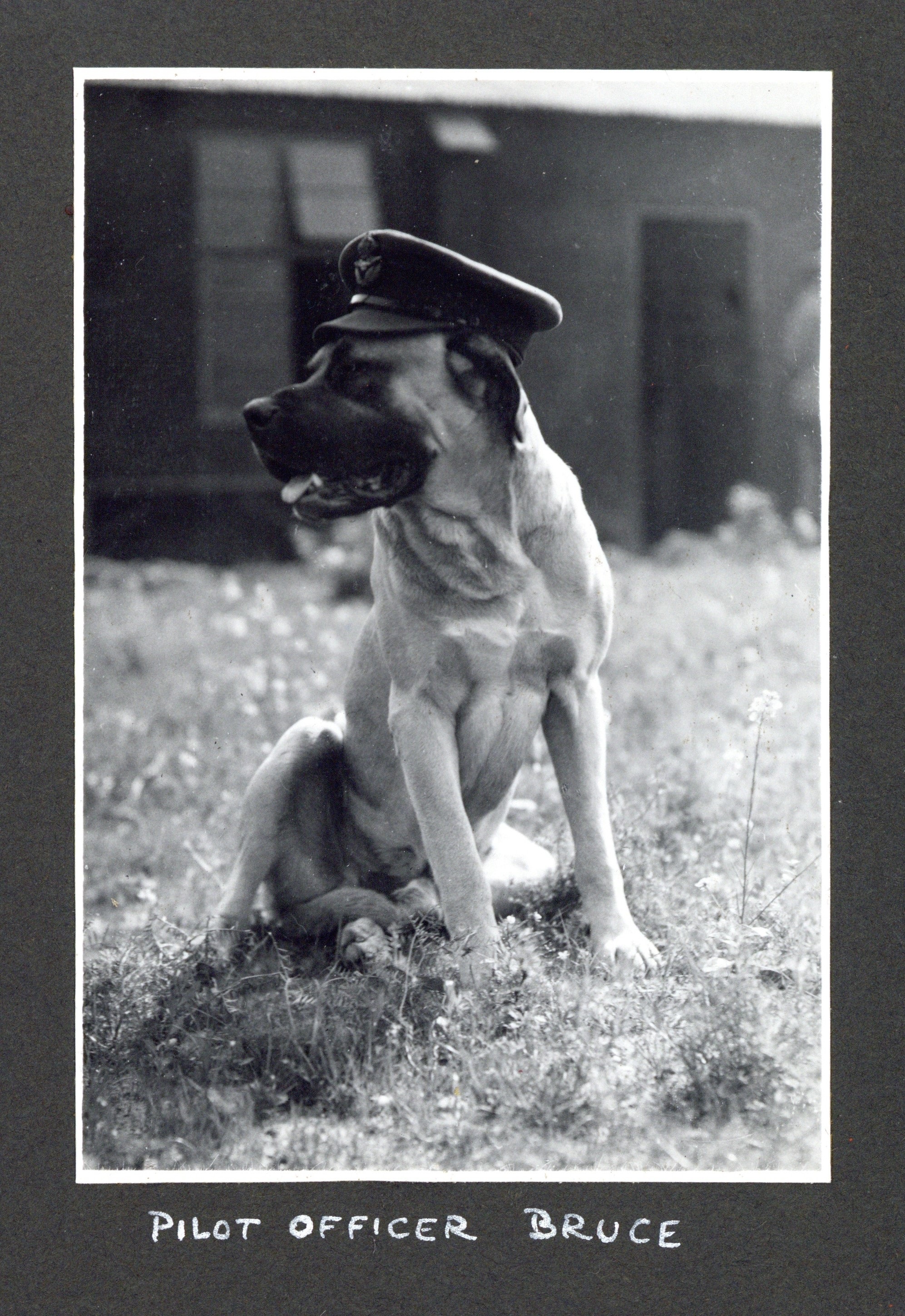 |
Bruce in uniform, taken at RAF Honiley in 1942.
Photo credit: Freddie Lammer (1909–2000).
|
Come the move to North Africa in November 1942, it became necessary to re-home Pilot Officer Bruce. His posting is well documented in The National Archives, where it is recorded that one Bull Mastiff was to move from No.255 Squadron RAF to No.488 Squadron RNZAF, a unit not taking part in Operation Torch.
[4] 488 wasn’t any old squadron happening to want a mascot, but one whose Commanding Officer - Richard Trousdale - was a former member of 255’s Officers Mess. Dog knew man and man knew dog.
A photograph in The Reg Mitchell Collection[5] shows Bruce still with No.488 Squadron in January 1944, by then located at RAF Bradwell Bay in Essex. There he enjoyed the company of another dog, a petite Spaniel bitch called Becky. Sometime in 1944, Bruce was reportedly "retired to a local Radar Station",
[6] but for many years it was not clear when this happened or exactly where Bruce went. In April 2018, new information came to light in response to publication of an earlier edition of this web page. Bruce left No.488 Squadron in the spring of 1944, nominally posted to RAF Neatishead but actually living with 85650 F/Lt Arthur Alexander ("Sandy") Ballantine and family at Mulberry Tree Cottage in the nearby village of Horning, Norfolk.
[7]Sandy was a former pilot in 255 Squadron who had been invalided out of that role with effect from 07.Feb.1942 in consequence of losing sight in one eye whilst serving at RAF Coltishall. Re-trained as a GCI radar operator, Sandy – a known animal lover – was only too pleased to take in Bruce when, not for the first time, the former Squadron Mascot became homeless. They had known each other from the time when Bruce first joined the Squadron as 102157 Michael John Mortimer’s pet.
Come the Normandy landings in June 1944, Sandy travelled with his unit to France. He died there on 20th June in consequence of injuries sustained in a German bombing raid a couple of days earlier. Sandy is buried at the CWGC Cemetery at Douvres-la-Délivrande in the Calvados region of Normandy.
Sandy’s widow Peggy, although reportedly also an animal lover, felt unable to keep, feed and control Bruce at the same time as dealing with her bereavement and bringing up her daughter Christine, then age 8 months. So Bruce was re-homed once again, by repute in the Lowestoft area. No record of where has yet been found. It was not possible for Bruce to return to No.255 Squadron; they were at that time in Italy. In any event Bruce would not have known anyone in the Officers Mess. After more than eighteen months overseas the squadron had undergone a total change of Officers and NCO aircrew, on the basis of rotation based upon the "one year tour" policy.
Somewhere in Sicily or the southern mainland of Italy, the Squadron acquired another dog – a mongrel, somehow named after the Squadron's long-serving Engineering Officer. Very different in character from Bruce, for many in the Squadron this pet nevertheless assumed the "shoulder to cry on" role that had been lacking in North Africa. It was needed, especially when friends were reported killed or missing, but the general decline in religious observance that had taken place in England (especially) since the First World War meant that fewer members of the armed forces turned to padres in times of emotional trouble. Cosmo Lang
[8] may, in his view of the world, have saved the Monarchy by engineering the abdication of King Edward VIII, but it had cost the church many devout followers. There may even have been, amongst the Squadron, those who subscribed to the view that the whole war might have been avoided had Edward VIII remained monarch, seeing (rightly or wrongly) the lost possibility of a compact with Germany that could have taken the steam out of
Lebensraum, the fundamental issue underlying German expansionism.
Any such nagging doubts about the whole conflict would not have concerned the dog; stressed aircrew could 'unload' onto him without feeling a need to subscribe to any pre-requisite religious beliefs or to adhere to any political correctness. This role of animals in war has passed largely unrecognised. They were a reminder of normality and, for many, of home too. Next time you are passing along Park Lane in London, please pause for a moment at the Animals in War memorial and remember the hidden psychological role that such mascots and pets played.
The same dog appears in photographs taken at both Grottaglie and Foggia Main. Apparently he moved between the sites with ease, begging the question "Did he fly?". For now, that remains a definite maybe.
Copyright © 2014–2025. All rights reserved except where otherwise stated.
